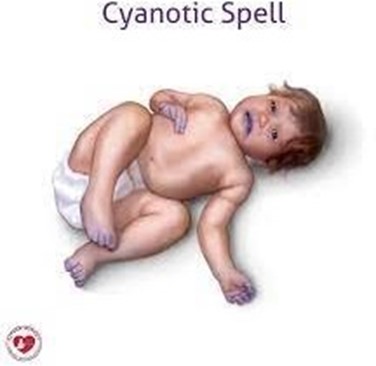A client in the psychiatric unit's dayroom is becoming agitated, talking incessantly, and starting to yell and swear at the other clients. Which action should the practical nurse (PN) implement first?
Instruct an unlicensed assistive personnel (UAP) to stay with the client.
Administer an as needed (PRN) medication for agitation.
Notify the client's healthcare provider.
Escort the client to a calm and quiet place.
The Correct Answer is D
Moving the client away from the stimuli in the dayroom and providing a calm environment, it may help to de-escalate the situation and reduce agitation. This action prioritizes the well-being of the client and helps to maintain a safe and therapeutic environment for all individuals involved.
A. Administer an as-needed (PRN) medication for agitation: Administering medication should not be the first action taken in this situation. It is important to first assess the client's condition and attempt to de-escalate the situation through non-pharmacological means. Medication should be considered if other interventions are ineffective or if there is an immediate risk of harm to the client or others.
B. Notify the client's healthcare provider: While it may be necessary to notify the client's healthcare provider about the situation, it is not the first action that should be implemented. The immediate priority is to ensure the safety of the client and those around them by providing support and supervision.
C. Escort the client to a calm and quiet place: Escorting the client to a calm and quiet place can be a helpful intervention, but it may not be the first action to take. It is important to first address the immediate safety concerns and attempt to de-escalate the situation. Once the client is calm and cooperative, they can be escorted to a more suitable environment if necessary.
Nursing Test Bank
Naxlex Comprehensive Predictor Exams
Related Questions
Correct Answer is B
Explanation
Explanation: In this scenario, the sudden regurgitation and cyanosis in a 24-hour-old infant indicate a potential airway obstruction or compromise. The immediate priority is to clear the airway and ensure adequate ventilation.
Suctioning the oral and nasal passages helps remove any potential obstruction or mucus that may be causing the cyanosis. This intervention aims to restore normal airflow and prevent further respiratory distress in the infant.
Let's briefly evaluate the other options:
A) Turn the infant onto the right side.
Positioning the infant on the right side does not directly address the potential airway obstruction or cyanosis. While positioning may have some benefit in certain situations, such as facilitating drainage, it is not the most appropriate immediate intervention in this case.
C. Give oxygen by positive pressure.
Administering oxygen by positive pressure may be necessary if the infant's oxygen saturation remains low after suctioning and clearing the airway. However, suctioning should be the initial intervention to address any potential airway obstruction or mucus before considering oxygen administration.
D.Stimulate the infant to cry.
Stimulating the infant to cry is not the appropriate intervention in this case. It does not directly address the potential airway obstruction or cyanosis. Crying requires a patent airway, and if the infant is already cyanotic, it suggests an obstruction or inadequate ventilation. Therefore, suctioning and clearing the airway takes precedence over stimulating the infant to cry.
In summary, when a full-term, 24-hour-old infant in the nursery regurgitates and suddenly turns cyanotic, the practical nurse should immediately suction the oral and nasal passages to clear any potential airway obstruction or mucus. This intervention aims to restore normal airflow and ensure adequate ventilation for the infant.

Correct Answer is B
Explanation
the practical nurse (PN) should engage in regular contact with the client who demonstrates an inability to communicate effectively. Regular contact helps establish a therapeutic relationship and provides opportunities for observation and assessment of the client's needs and behavior. It also helps the PN to build trust with the client over time.
The other options listed are not appropriate methods for interacting with a client with psychosis who has difficulty communicating effectively:
A. Discouraging group activities: Group activities can be beneficial for individuals with psychosis as they provide opportunities for social interaction, skill-building, and support. It is important to encourage participation in appropriate group activities that are tailored to the client's needs and abilities.
C. Touching the client when speaking: Touching the client without their consent may be perceived as invasive or threatening, especially for individuals with psychosis who may already have difficulties with sensory processing or boundaries. It is important to respect the client's personal space and communicate through verbal means, maintaining a respectful and
non-intrusive approach.
D. Establishing a no-harm contract: No-harm contracts are typically used in the context of suicidal or self-harming behaviors to promote safety and identify support systems. While safety is important, it is not directly related to the communication difficulties associated with psychosis. Instead, the focus should be on developing a therapeutic relationship and finding effective means of communication with the client.
Whether you are a student looking to ace your exams or a practicing nurse seeking to enhance your expertise , our nursing education contents will empower you with the confidence and competence to make a difference in the lives of patients and become a respected leader in the healthcare field.
Visit Naxlex, invest in your future and unlock endless possibilities with our unparalleled nursing education contents today
Report Wrong Answer on the Current Question
Do you disagree with the answer? If yes, what is your expected answer? Explain.
Kindly be descriptive with the issue you are facing.
